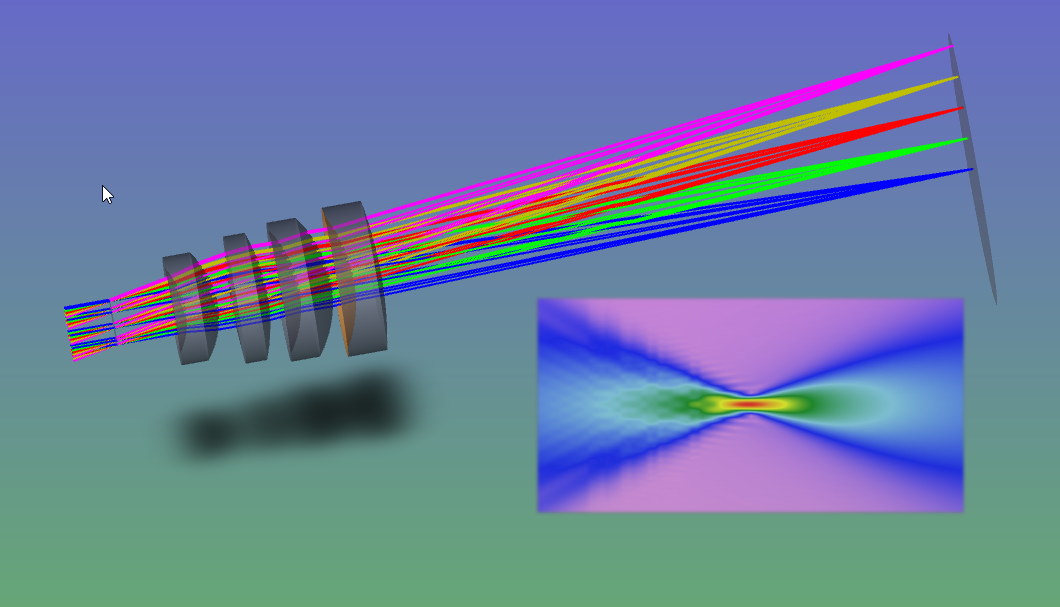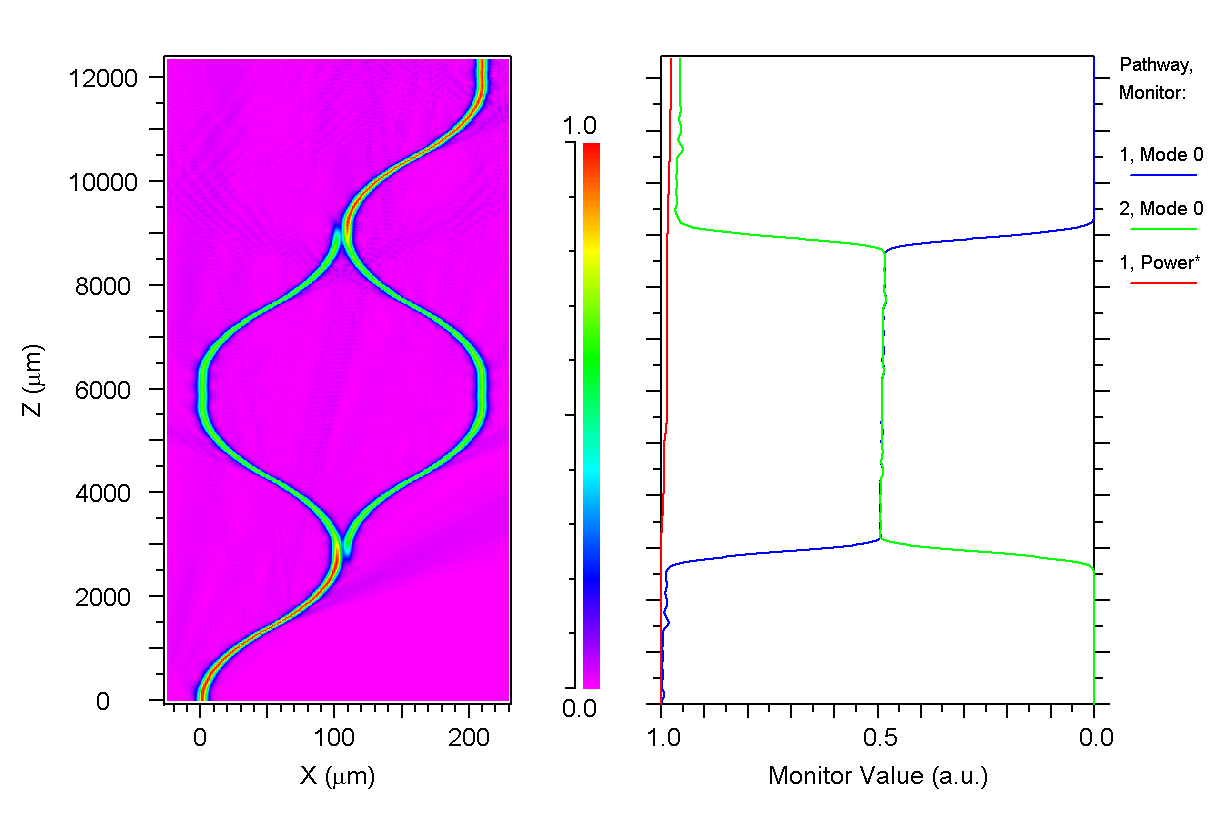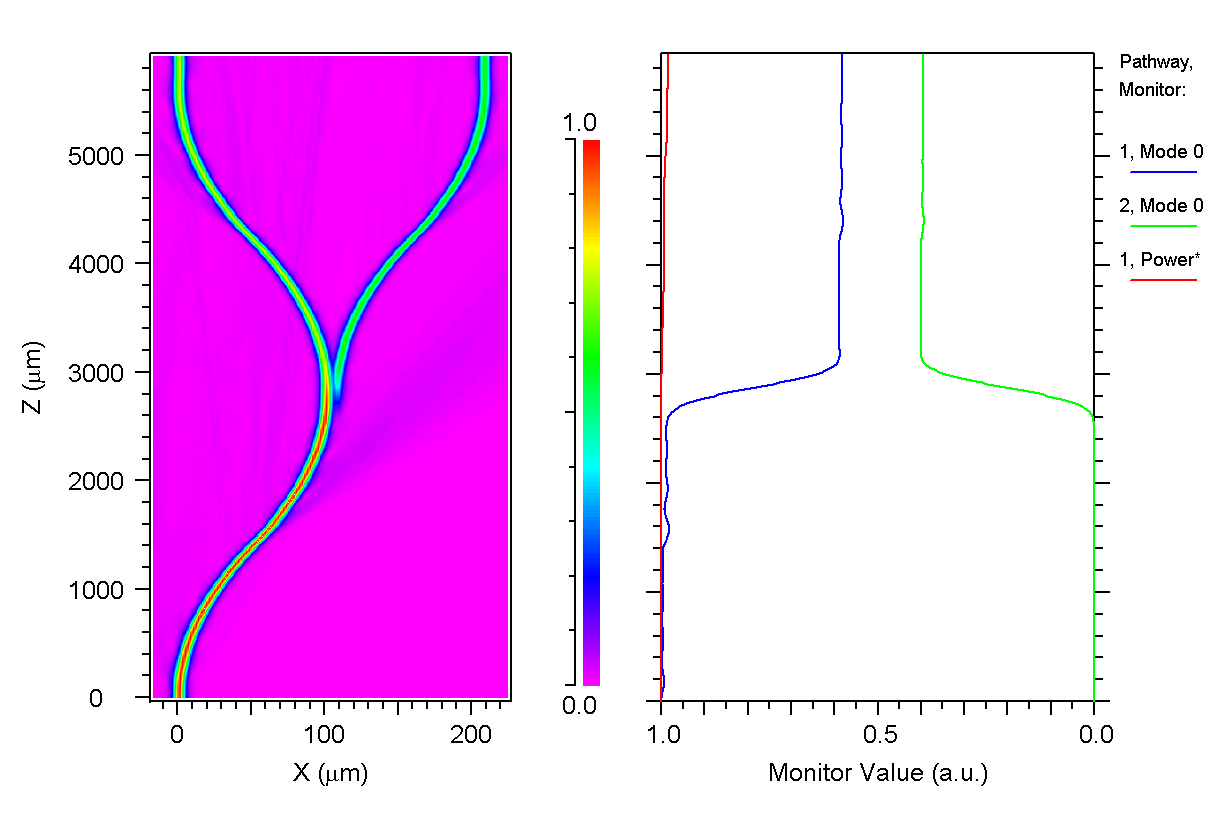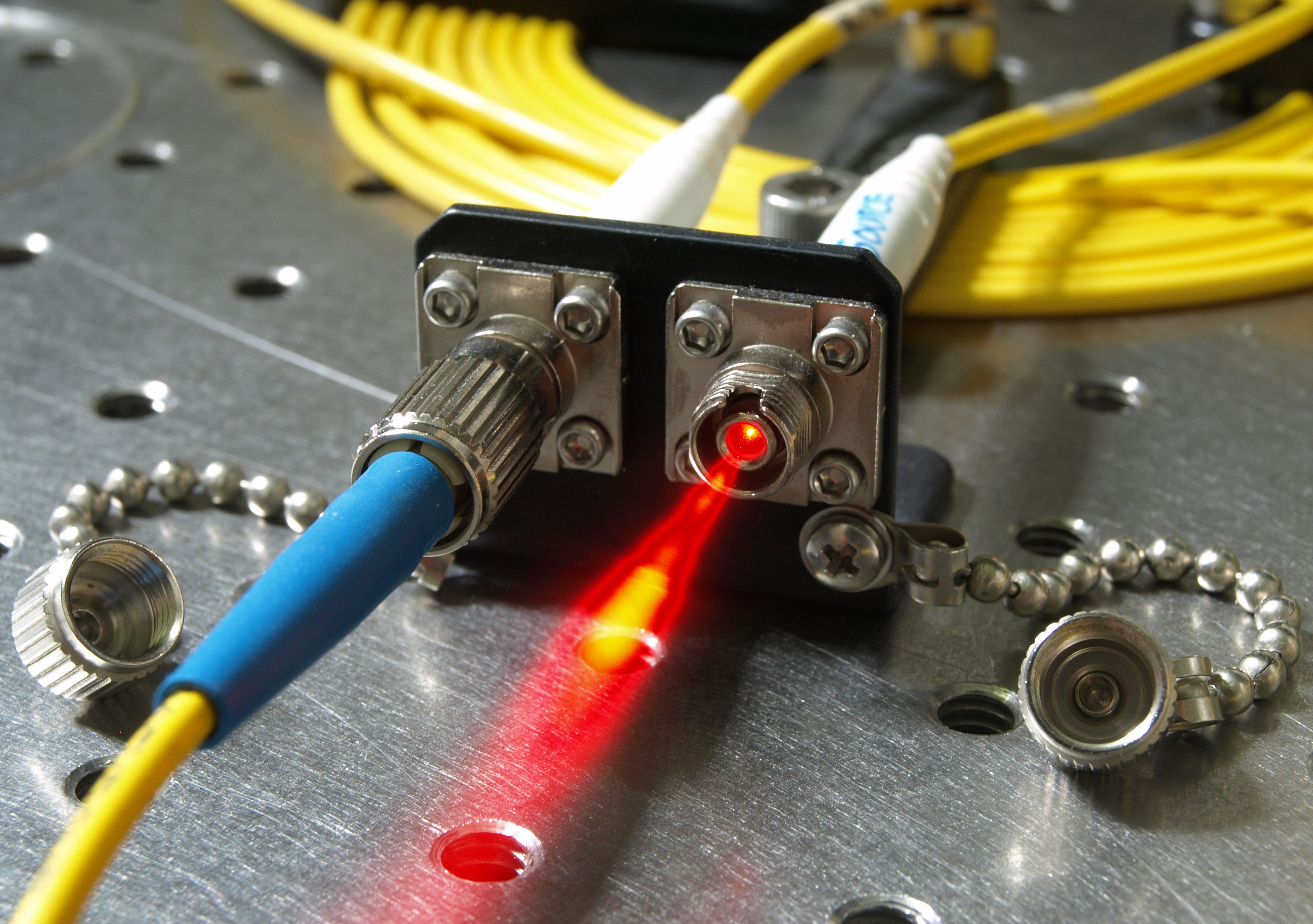Optical design and simulation
Wir modellieren und analysieren Ihr optisches System oder Messverfahren
When developing and improving products of all kinds, the use of simulation software to predict system behavior makes it possible to reduce the number of laboratory tests and thus save a great deal of time and money.
and thus save a great deal of time and money.
Numerical methods and simulation techniques are also playing an increasingly important role in the field of photonics. Our expertise lies in the design and simulation of imaging or illuminating systems, fiber and integrated optics, optical thin-film technology and optical metrology.
Our offer:
- Conception and design of photonic systems:
- Imaging (sequential ray tracing)
- Non-imaging (non-sequential ray tracing)
- Wave-optical simulations
- Thin-film simulations
- Design studies and feasibility analyses to determine specifications
Our software tools:
Design and simulation of optical systems
What we do
We model and analyze your optical system or measurement method: We design new optics according to the requirements or work with you to develop the necessary specifications with which we can then design and evaluate your system. We carry out design studies and feasibility analyses on optical issues; also in cooperation with subsequent image processing or measurement data evaluation. We use both sequential and non-sequential beam processing with OpticStudio.
What we can offer you
- Modeling, simulation, optimization for imaging and non-imaging optical systems
- Integration of special optical elements
(Vari-focus lenses, diffractive optical elements, aspheres, freeform optics, etc.) - Modeling of hybrid optical systems
(macro-, micro-, integrated optics and photonics) - Interdisciplinary collaboration at the OST Campus Buchs with image processing, photonics simulation, metrology, optics laboratory

Our experience
OPTIK DESIGN:
- Designstudien und Machbarkeitsanalysen zur Spezifikationsfindung
- Konzeption und Auslegung optischer Systeme
- Optimierung, Bewertung und Toleranzanalyse optischer Designs
- Auswahl optischer Komponenten
OPTISCHE SIMULATION und MODELLIERUNG:
- Beleuchtungssimulation und lichttechnische Berechnungen
- Simulation optischer Inspektions- und Messverfahren
- Physikalisch optische Simulation
Our software tools
- OpticStudio (ZEMAX)
Contact
Prof. Dr. Stefan Rinner
IMP Institut für Mikrotechnik und Photonik Professor für Physik und Photonik, Patentingenieur
Waveguide simulation
Our focus
Numerical methods and simulation techniques are playing an increasingly important role in the field of optics. We are particularly interested in the simulation of components in the field of fiber optics and integrated optics.
Wave-Optical simulations (Synopsys - RSoft Photonic Design Software)
The RSoft Component Design Suite of Synopsys is a widely used simulation tool for designing photonic's components. In the course of a CTI-project (Commission for Technology and Innovation) the following tools have been acquired:
- BeamPROP
- FullWAVE
- DiffractMOD
- Grating MOD
- FemSIM
BeamPROP is used for the modelling of single-mode waveguides or fibers. There are two methods available. The mode-solver allows to calculate the energy distribution along the waveguides cross section. The beam propagation method on the other hand can model the field distribution across the desired component. BeamPROP can solve 2D as well as 3D problem.
FullWAVE is based on the «Finite-Difference Time-Domain» method (FDTD) opens up a broad range of applications. The FDTD is even able to model the feedback of electromagnetic waves by solving the Maxwell equations. This is of particular interest in the field of surface plasmons and biophotonics.
DiffractMOD is based on the «Rigorous Coupled Wave Analysis» method (RCWA). It is of particular interest for diffractive structures like diffractive optical elements (DOEs) and waveguide resonators.
GratingMOD is based on the «Coupled Mode Theory» (CMT). It is mainly used to calculate and analyse Bragg gratings. Furthermore it is suitable for «long-period» gratings and the design of optical amplifiers.
FemSIM is used for the calculation of waveguide and resonator modes of any structures. It is based on the Finite Element Method (FEM).


Contact
Prof. Dr. Markus Michler
IMP Institut für Mikrotechnik und Photonik Professor für Physik und Photonik Leiter Kompetenzbereich integrierte Optik, Profilleiter Photonics
Thin Film Simulation
Our focus
Numerical methods and simulation techniques are also playing an increasingly important role in the field of optics. We are particularly interested in the simulation of components in the field of optical thin-film technology.
Thin Film Simulation (FilmStar)
The calculation and modelling of reflective and transmissive properties of thin film systems are based on the Fresnel equations. With the use of matrix algorithms the spectral performance at various incident angles can be calculated. One can even determine the associated colour to the spectrum in the CIE colour space. The TFCalc software package is used to model of anti-reflective, mirror or filter coatings. For more complex tasks like optimization or the analysis of existing spectral curves we use the software package Filmstar by FTG.

Contact
David Bischof
IMP Institut für Mikrotechnik und Photonik Projektleiter, Fachverantwortlicher 3D Laserbearbeitung von Glas
Prof. Dr. Markus Michler
IMP Institut für Mikrotechnik und Photonik Professor für Physik und Photonik Leiter Kompetenzbereich integrierte Optik, Profilleiter Photonics

